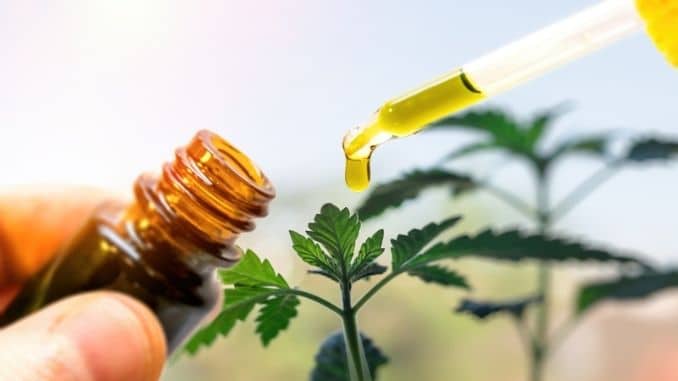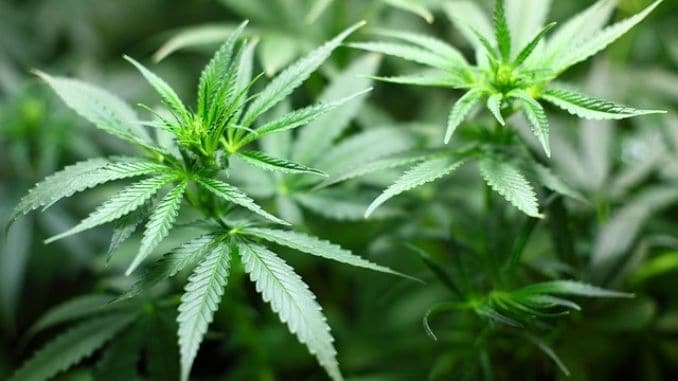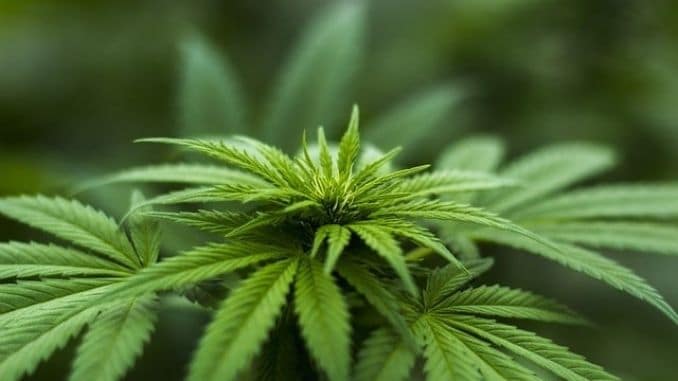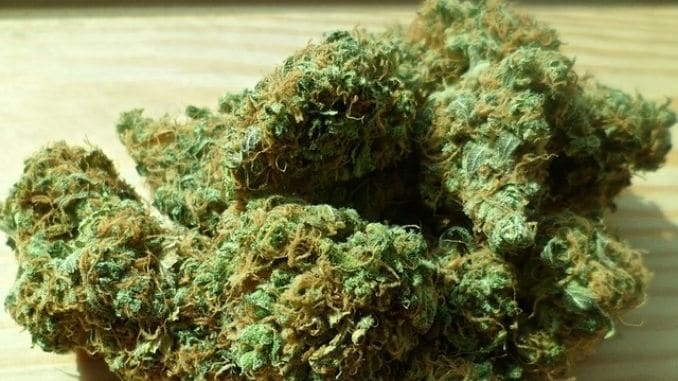
In 2018, Michigan became the 10th state in America to legalize recreational marijuana. A total of 33 states now have laws on the books allowing medical marijuana as well, which is used only for the treatment of medical conditions.
In October 2018, Canada became the second country in the world, after Uruguay, to legalize the cultivation, possession, and consumption of cannabis ― the plant from which marijuana is made ― and its by-products. Meanwhile, more states and countries are debating the risks and benefits of doing the same as questions about the safety of these products remain on many people’s minds.
What is the difference between medical marijuana and recreational marijuana? Are there forms of the product that don’t have the mind-altering effects, and what is cannabidiol (CBD) oil?
Cannabis Is a Plant Like Many Others
The marijuana plant, or as it’s scientifically termed, cannabis sativa, has been used for centuries like many other plants — as a source of traditional medicine. By the year 500 B.C., there were widespread reports of its use in Asia as an antibiotic, anti-inflammatory and sedative as well as a treatment for angina, gout, depression, and gonorrhea.
The plant was also used even earlier for its strength as a fiber. There is evidence that as early as 10,000 B.C., hemp ― one of the most popular varieties of the plant ― was grown to create paper, rope, sail, and clothing. As time went by, because hemp was fast growing and easy to cultivate, it became popular in other areas, including Africa, Europe, and colonial America.
These early hemp plants — similar to today’s hemp — had very low levels of tetrahydrocannabinol (THC), which is the compound responsible for the mind-altering effects. There is evidence, however, that ancient peoples may have cultivated different varieties of the plants — as is also done today — to have higher levels of THC. These varieties were then used in religious ceremonies and healing practices.
Like any other plant, cannabis contains many compounds, and cultivators can choose to increase levels of one or another depending on what they want to use the plant for. Throughout history, humans have chosen to use cannabis for both recreational and medicinal purposes.
Early Use of Marijuana for Mind-altering Effects
The first use of cannabis as a psychoactive agent goes back to 2727 B.C. when the Chinese Emperor Shen Nung was said to have noted its intoxicating properties in his writings, though he focused mostly on its medicinal properties. Other cultures — including Indians, Muslims, Persians, Greeks, and Romans — later fully embraced cannabis’ psychoactive component.
In the 1500s, the Spanish brought cannabis to the New World, where it was grown as a commercial crop alongside tobacco and used mainly as a source of fiber. Although the plant was likely used for its mind-altering and health benefits early on as well, it was in the 1800s that it caught on as a medicine.
From 1850 to 1942, cannabis was listed in the United States Pharmacopeia as useful for conditions like nausea and rheumatism and for easing labor pains. In 1937, however, the U.S. government passed the Marijuana Tax Act, restricting the use of marijuana and, in the 1950s, increasing penalties for possession.
These actions were motivated by concerns about the potential harms of the drug, along with its reputation as being a “gateway” drug that increased risk of later abuse of heroin, cocaine, and other dangerous substances.
In 1970, the Controlled Substances Act classified marijuana as a Schedule 1 drug, meaning it had the highest abuse potential and no accepted medical use. After that, marijuana was illegal and prohibited in the U.S. until recently when laws begin to change.
What Is THC?
Tetrahydrocannabinol (THC) is the main mind-altering chemical found in cannabis and is responsible for the intoxicating effects. It’s present in the resin produced by the leaves and buds, primarily in the “female” form of the plant. Cannabis contains hundreds of other chemicals as well, including more than 100 that are related to THC called cannabinoids.
THC works on the human brain because it’s similar to a natural brain chemical called “anandamide.” This is a neurotransmitter that sends chemical messages between nerve cells in the brain and throughout the central nervous system, affecting memory, thinking pleasure, concentration, mood, coordination and time perception.
Because THC is so similar, it can attach to the same receptors that anandamide would use and activate them, disrupting mental and physical functions and causing mind-altering effects. Depending on the levels of THC present in the product, it can cause impaired thinking, difficulty learning, balance problems, lowered reaction time, poor coordination and, at very high levels, even hallucinations, delusions, and loss of a sense of personal identity.
THC also stimulates regions of the brain involved in the reward system, releasing the chemical dopamine at higher levels than usual and contributing to a feeling of being “high.” This is also the reason why marijuana can be addictive and can lead a user to search for even more potent highs later on, such as those associated with heroin.
What Are the Damaging Effects of THC?
A growing number of studies in humans show that marijuana exposure in young people can cause long-term changes in the brain that affect memory, learning and cognitive thinking. Some research has suggested that regular use during the teenage years can reduce the volume of some regions in the brain, including those involved with memory and impulse control.
In a large study of about 4,000 young adults, researchers found that the longer the subjects used marijuana, the higher their risk of problems with verbal memory by the time they reached middle age. Another large study found that persistent use of marijuana starting in adolescence resulted in a loss of an average of six to eight points in IQ later in life.
Other research has linked marijuana use with an increased risk of mental disorders, including schizophrenia, depression, anxiety and substance use disorders, although results haven’t been consistent from study to study. Marijuana smoke is linked with throat and lung irritation and contains chemicals similar to those in regular tobacco smoke, raising concerns about cancer risk. It’s also associated with inflammation in the airways, chronic bronchitis, and increased blood pressure.
Although most scientists agree that marijuana is particularly dangerous for young people because they’re minds are still developing, there remains a debate about its health effects in adults. The current scientific literature shows evidence of the following:
- Long-term use can lead to addiction — the risk is higher when use begins in adolescence.
- Teen use leads to negative effects in the brain, including impaired connectivity in specific brain regions involved in learning and memory.
- Use in adolescence can lead to multiple addictive behaviors in adulthood.
- Both immediate and long-term exposure impairs driving ability. One meta-analysis discovered that the overall risk of involvement in an accident increased by a factor of two when driving after using marijuana.
Meanwhile, the levels of THC in marijuana have been increasing over the years. Scientists report that in the 1980s, it averaged about 3 percent whereas, in 2012, it had risen to an average of 12 percent. This raises concerns that the use of marijuana today may be more damaging than it was in the past. We do know that there has been an increase in the number of emergency department visits by those using marijuana as well as an increase in marijuana-related fatal car accidents.
Are There Health Benefits Related to THC?
We have evidence that smoking marijuana can help:
- Stimulate appetite in patients with acquired immunodeficiency syndrome (AIDS)
- Combat chemotherapy-induced nausea and vomiting as well as severe pain
- Decrease intraocular pressure in those with glaucoma
- Ease symptoms in those suffering from chronic pain from a variety of conditions
- Relax muscles and may help reduce tremors in Parkinson’s disease
- Ease spasm-related pain in multiple sclerosis
- Assist returning veterans in managing symptoms of post-traumatic stress disorder (PTSD)
THC is known to have strong anti-inflammatory and pain-relieving properties. The United States Food and Drug Administration (FDA) has approved THC-based medications dronabinol (Marinol) and nabiolone (Cesamet) for the treatment of nausea in patients going through chemotherapy for cancer, and to stimulate the appetite of those suffering from wasting syndrome caused by AIDS.
It’s unclear at this point, however, whether patients may be able to get the same effects with cannabis products that contain less THC. That is something that researchers are now trying to find out — just which components in the cannabis plant hold the most promise where medical treatments are concerned?
What Is CBD?
The 1970 Controlled Substances Act restricted not only the use of cannabis for recreational purposes, but also research purposes. Now that the laws are changing, scientists are once again conducting studies on cannabis to see better determine its possible benefits.
One of the main chemicals in the plant besides THC is cannabidiol (CBD), which contains no mind-altering effects. It blocks the same receptors that THC activates. This has led to some research on how the two chemicals interact, with the goal of creating a ratio that might help treat certain medical conditions.
CBD acts in other ways in the body too, creating other health benefits. It increases levels of the neurotransmitter anandamide — which then helps regulate serotonin, the “good mood” neurotransmitter — and dopamine, the one responsible for the brain’s reward system. Because of these actions, CBD has been found in studies to help ease symptoms of depression and anxiety.
CBD has also been found to help reduce the risk of seizures in those who have epilepsy. Recently, the FDA approved the use of the prescription drug Epidiolex, which contains CBD, to treat rare forms of epilepsy that haven’t responded well to other treatments.
Hemp has a higher concentration of CBD than plants grown for the purposes of making marijuana and a much lower concentration of THC, so it is often used as a source for CBD. So far, we have studies indicating that CBD may be helpful for:
- Treating neuropathic pain
- Easing inflammation
- Reducing symptoms of anxiety and depression
- Soothing the pain of arthritis
- Inhibiting the growth of cancer cells
- Supporting the immune system
So far, studies are limited, so we have to wait for additional information to be sure what CBD and other compounds in the cannabis plant may be able to do for us. The changes in the laws are opening the doors for new trials, however, which should lead to more definitive results in the future.
Meanwhile, since CBD lacks the mind-altering effects of THC, it has become more popular among health enthusiasts who want to enjoy its other benefits. CBD ingredients and CBD oil can now be found in all types of products, including moisturizers, vitamins, teas, massage oils, and even dog treats.
Laws vary from state to state as to the legality of CBD and its various products. Historically, hemp was illegal to sell or grow in the U.S., but the recent passage of the farm bill legalized its cultivation. There is still confusion, however, as to whether that will also allow for the legal sale of CBD nationwide.
The FDA has issued a statement saying that any hemp-based CBD product marketed as having therapeutic benefits or as a dietary supplement is illegal unless the FDA has reviewed and approved it. The administration has reportedly already started cracking down on companies selling CBD products.
That hasn’t stopped manufacturers from offering them, however, as CBD products are widely available and, at the time of this writing, the legal risk to consumers is minimal.
For your guide to the best foods to heal your body, check out The Best Foods that Rapidly Slim & Heal in 7 Days, here!






